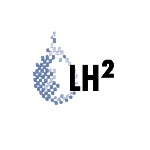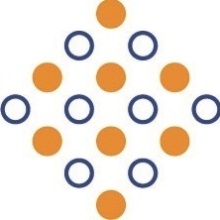- Description
-
Fractured systems appear in many application fields, such as reservoir engineering, and are highly challenging for numerical simulation (Berkowitz, 2002; Dietrich et al., 2005). Characteristic properties are strongly discontinuous material coefficients and geometrical anisotropic inclusions.State of the art and preliminary work: Classical equidimensional discretisation techniques require a huge number of degrees of freedom to resolve the fine three-dimensional geometrical details and thus are not attractive from the practical point of view (Gebauer et al., 2002). At the same time, standard homogenisation techniques are not applicable because no representative elementary volume can be determined (Dagan and Neumann, 1997). As an alternative to equidimensional modelling, two-dimensional discrete fracturenetworks have been developed and investigated. Quite often, the network is considered an isolated system and no coupling to the three-dimensional porous rock matrix is taken into account (Bear et al., 1993).Existing coupling schemes require a conforming setting in the sense that the network is resolved by faces of the three-dimensional volume mesh (Assteerawatt et al., 2009). This approach usually requires an expensive mesh-generation process which in addition cannot avoid extremely badly shaped elements resulting in poor accuracy and possibly unphysical values.Goals: The goal of the proposed project is to develop robust and flexible numerical schemes for such coupled network systems of co-dimension one. Our new approach will not require a matching of the threedimensional mesh with the two-dimensional discrete fracture network, resulting in three-dimensionalstructured meshes of high quality. Thus, it is quite attractive for the numerical simulation of geometrical complex networks. The coupling of the three-dimensional with the two-dimensional model will be based on XFEM-techniques (Mohammadi, 2008) applied to mass conservative schemes. Of special interest are inner penalty methods which are widely used in the Discontinuous Galerkin context (Rivière, 2008) and Lagrange multiplier formulations which are known to be robust in the non-matching mesh situation (Wohlmuth, 2001).Implementation and analysis have to go hand in hand. Inner penalty approaches ask for the choice of a suitable problem-dependent parameter to guarantee well-posedness of the coupled system. On the other hand, Lagrange multipliers give rise to saddle-point formulations requiring a uniform inf-sup condition to be stable. The most challenging part is the design of a flexible and consistent weakly coupled scheme. First, our new methodology will be developed for simple single-phase flow problems. The extension and application towards more realistic two-phase compositional flow and transport processes will be undertaken in close collaboration with project A15. Since fractured systems play an important role in CO2 sequestration processes, our approach may be valuable for further employment in project C12.
- Project managers
-
Wohlmuth, Barbara I.
Flemisch, Bernd - Research assistant
-
Schwenck, Nicolas
- Department
-
LH2
- Duration
-
04/2010 - 03/2013
- Funding
-
International Research Training Group NUPUS / German Research Foundation (DFG)
Contact



